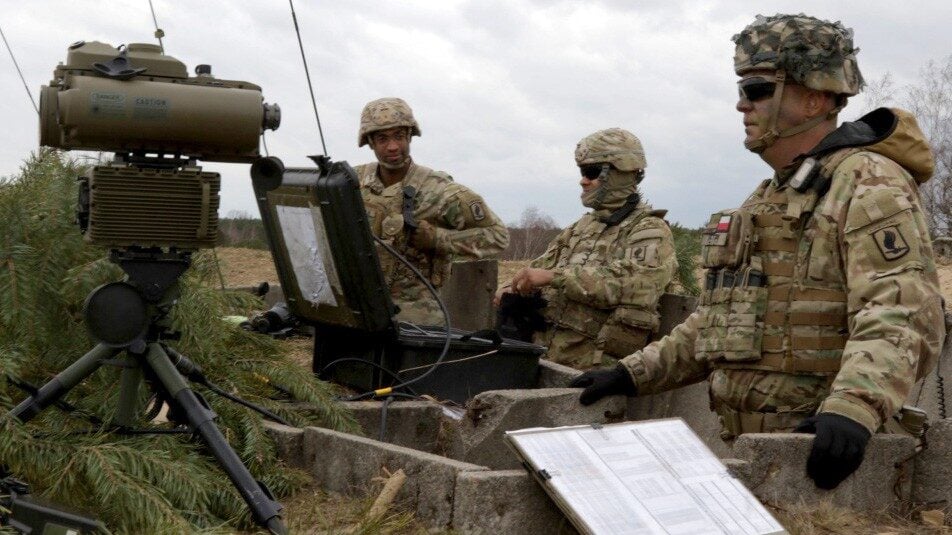THERESA HITCHENS

WASHINGTON: The Army’s recent agreement with Capella Space to explore possible use of the firm’s synthetic aperture radar satellites is part of a high-priority service initiative to figure out how to bolster the service’s most critical missions using satellite tech, a top Army official leading the push told Breaking Defense.
“Air and missile defense, long-range precision fires, assured position navigation and timing — all of these rely on space-enabled capabilities and access to space,” said Tom Webber, who heads the Army Space and Missile Defense Command Technical Center. “And so we’re looking at capabilities on all lines of effort, if you will, from [communications] to [radio frequency], whatever it may be, to enable the tactical warfighter.”
Those areas are three of the Army’s six top modernization priorities, spearheaded by Army Futures Command. All are considered by service leaders as crucial to the Army’s ability to implement the US military’s new Joint Warfighting Concept for prosecuting global, information-based warfare with Russia and China across all warfighting domains — air, land, sea, space and cyberspace.
The Technical Center’s science and technical (S&T) efforts related to space, Webber said, are based on high priority needs identified by the command’s Assured Positioning, Navigation and Timing Cross Functional Team (APNT CFT). Despite its name, that CFT is coordinating all Army space sector activities, not just PNT. This includes ISR, communication, PNT, and Battle Management Command and Control (BMC2) based on Low Earth Orbit (LEO) satellites. It also includes the service’s effort to develop a common, mobile ground station under project TITAN (Tactical Intelligence Targeting Access Node), which is meant to integrate sensors operating in all domains.
The Futures Command via the APNT CFT “established the priority requirements for the warfighter where we’re going to invest our S&T dollars,” Webber said.
The SMDC Technical Center is funded through a combination of direct funding in the Army’s annual budget request and dollars brought to the table by potential users such as a Combatant Command or a service Program Executive Officer (PEO) responsible for particular portfolio of acquisition programs, he explained.
In total, the lab’s S&T projects are budgeted in the “hundreds of millions” range, Webber said. Space projects account for some “tens of millions” in spending. “We’re the rounding error in the rest of the Army’s combat capability development command,” he said with a laugh.
That is one of the reasons the center is bullish on the use of Cooperative Research and Development Agreements (CRADAs), such as the one with Capella Space, which allow the military services to experiment with a company’s technology for no cost.
“We have probably a half dozen CRADAs in place now, with several more at various stages of development,” Webber said.
The agreement with Capella, he elaborated, “is very interesting for us because it gives us the opportunity to explore the potential advances in low cost and current state of the art synthetic aperture radar satellites and space technologies that we can use to address the Army and other DoD requirements. And that includes imagery tasking and uplink, the SAR satellite downlink and ground station performance, image processing, and image dissemination.”
He explained that the Technical Center’s focus is “how we put the emphasis on experimentation efforts that show promise to reducing the data latency between the sensor and the shooter.” SAR is “a big way to do that. And so what we’re doing with Capella, as with others, we’re really exploring these options to be able to provide that information directly into the Army’s tactical operations.”
For example, Webber’s lab is exploring with Army Futures Command how to support its test events. The already has shown it can interface with the command’s current Common Ground Terminal, he noted, “and then we’ll be integrating with the future Tactical Intelligence Targeting Access Node, or TITAN, which is a mobile ground station system under development.”
Webber said the Technical Center uses different methodologies for leaping the dreaded valley of death between lab-demonstrated tech and service programs of record. Successful demos can be directly transitioned to a PEO as part of a new acquisition program. Or the lab could be tapped by a PEO to help leverage a promising commercial technology by repurposing it for Army-specific needs.
At the other end of the scale, an available capability once proven to have advantages for the Army could be something the service simply buys directly from a vendor, such as commercial satellite communications, he added.
“We’re not investing in technologies that don’t have a transition,” Webber stressed.
No comments:
Post a Comment